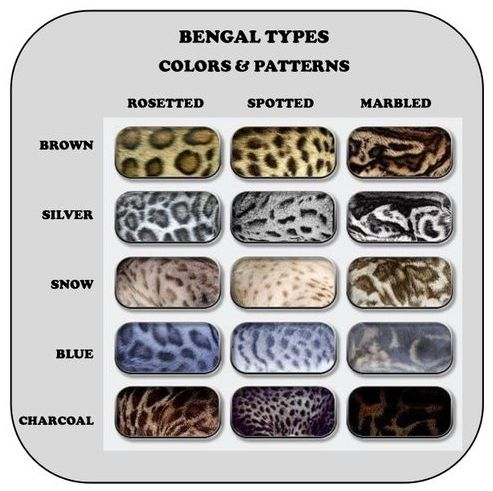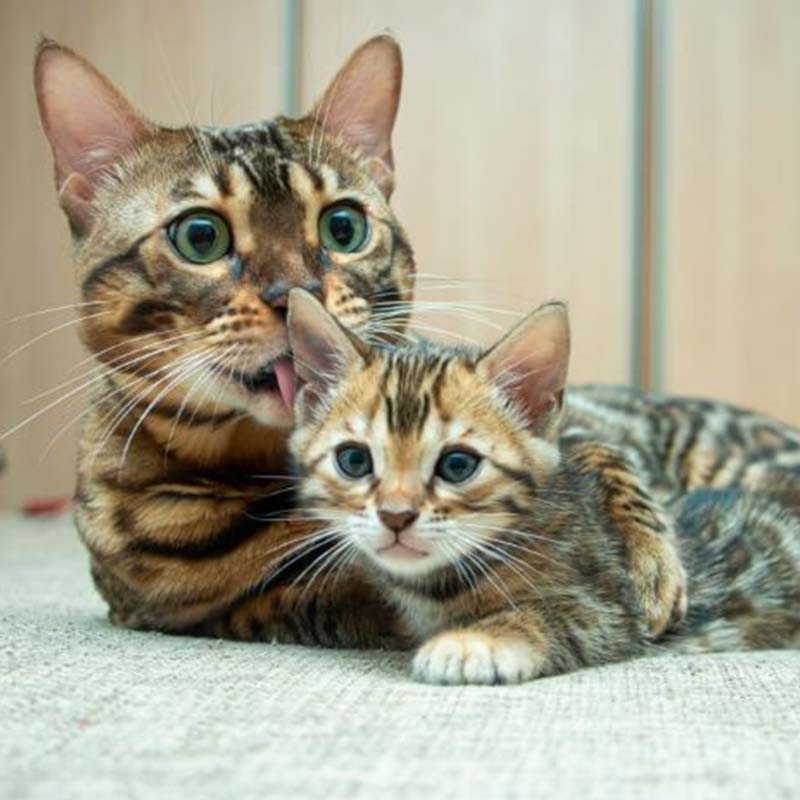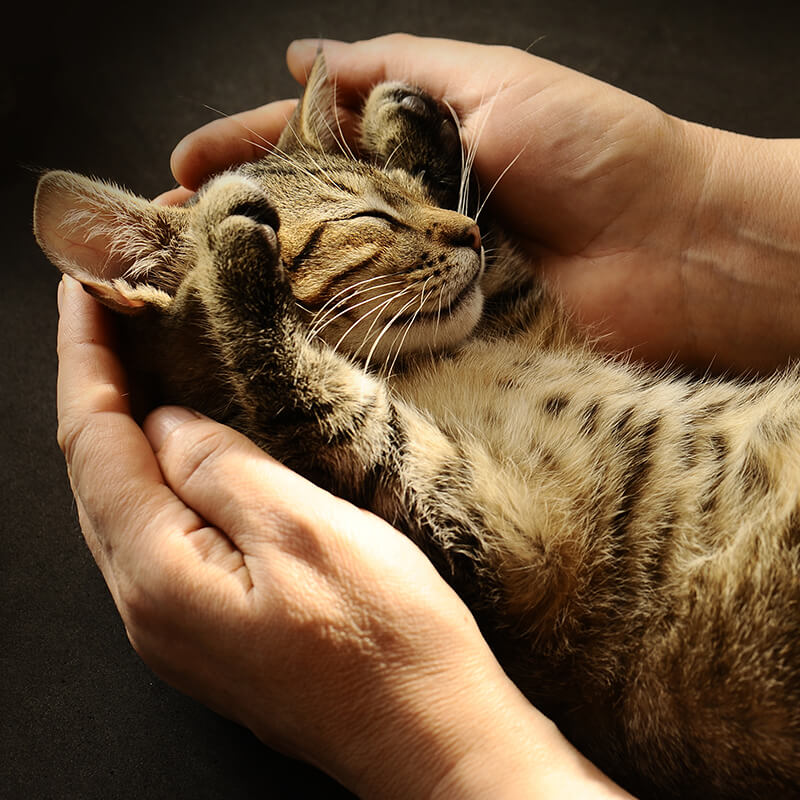The Bengal cat is often recognized for his beautiful spotted coat similar to his ancestor, the Asian leopard cat. But did you know that the Bengal cat can have other coat patterns and a wide variety of colors? Let’s start with the different patterns…
The Rosetted/spotted Bengal Cat
The Bengal cat pattern that we see most often is rosetted or spotted. To differentiate the two, you must look at the spots. If they are formed more or less like closed circles with a lighter color in the center, these are rosettes, so it would be a rosetted Bengal cat. In the case of the spotted Bengal cat, the spots are easily recognized because they are smaller and only one color, darker than the coat. In both cases, there are different shapes and sizes possible. The different shapes of rosettes can be called donut, pancake, clouded, paw-print and arrowhead. Regardless of the pattern, the rosetted or spotted Bengal cat can exist in all the different possible colors. Here are some examples:
Rosetted
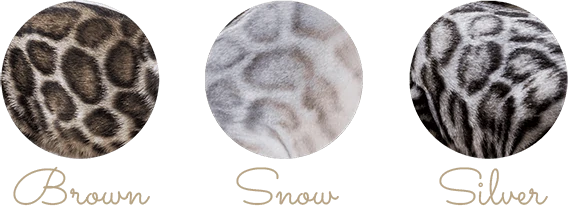
Spotted
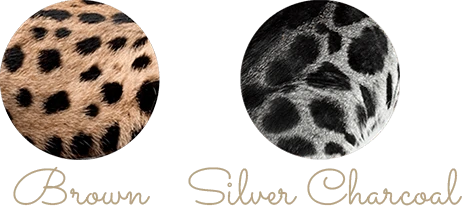
The marble bengal cat
See the wild and exotic appearance of the marble Bengal cat. Many people think that only the rosetted Bengal has the wild look … until they see an amazing marble Bengal cat. The marble pattern often becomes more and more beautiful between birth and the first year of life. The more the kitten grows, the more the pattern opens and reveals his colors. The marble Bengal cat will also have the possibility to be produced in the same colors as a spotted or rosetted Bengal cat pattern.
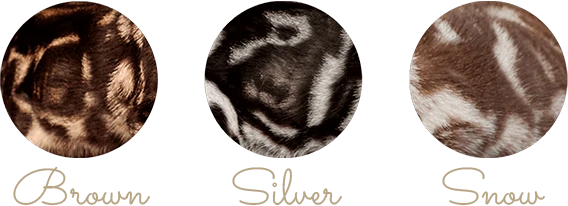
Bengal Cats (bred from the wild Asian Leopard Cat) that look like small leopards but are domestic and loving! The history of the Bengal breed, from Foothill Felines (California). The Bengal cat is a relatively new (started in earnest in the mid-1980s), exotic breed of domestic cat originally created by the breeding of the small, wild Asian Leopard Cat to a domestic cat such as the Abyssinian, American Shorthair, Burmese, or Egyptian Mau. The Bengal breed allows those of us who love and admire wild cats to live with and enjoy their beauty and uniqueness in our own homes, while also benefiting from the domestic Bengal’s loving, friendly, playful disposition. Bengals must be four or more generations removed from their wild Asian Leopard Cat ancestor, and have three consecutive generations of Bengal to Bengal breeding in order to be eligible to be shown in T.I.C.A. (registration paperwork will reflect “SBT” in the registration number, which means the cat has “studbook status”.) Currently, SBT Bengals can be shown in T.I.C.A., U.F.O., A.C.F.A., I.C.E. and a few other Cat Associations, some for Championship Titles. The early generation Bengals, which we refer to as “Foundation or Filial Bengals”, such as F-1, F-2 or F-3 (one, two or three generations, respectively, removed from the Asian Leopard Cat) are best left to specialized breeders or properly prepared and informed owners who are equipped to take care of them. F-4’s and beyond, or SBT’s, are the true domestic Bengal. They usually make the best pets, and when they are carefully bred within highly selective and loving breeding programs, make delightfully affectionate, stunningly gorgeous family companions!! “

